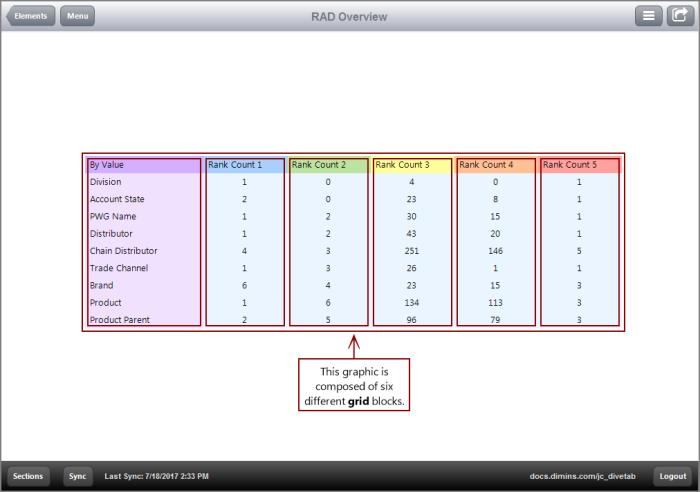A grid is a series of rows where the developer specifies the content. Define a grid block by specifying rows from a cPlan and the strings in those rows. A grid can contain one to many rows, and a row can contain one to many column types, including alerts, bullets, column-sets, and text columns.
Use a grid to display summaries of data and present an overview of the selected information. You can group different columns together and condense large amounts of data. For example, a grid provides a quick look at the data, such as the dimension and the total number of values included in the dimension, rather than listing every value.
NOTE: A column-set cannot have an expand-set when used in a grid block.
Grids are a type of element and can be used only in central or overview pages within an elements or tab block.
Here is an example of an ![]() overview page using several grid blocks.
overview page using several grid blocks.
Each grid is composed of rows, and each row forms a cell. These rows are customized by the developer. In the left most grid and rows along the top of the graphic, the rows have been customized to include a background color for the row. The light blue rows indicate the presence of a link; no background color is in use. If a background color and link are used together, the link color takes priority.
NOTE: When several columns are used in a single row, the values are aligned from left to right in the row itself.
Numerical values are specified in the cPlan. If they are not specified, the row remains blank because there is no corresponding value to refer to. For example, the cPlan used for this sample overview page includes the following calculation:
calc "Division Rank 1" `sum(value("Actual delta 1"))`filter = `value("Dimension") = "Division" `
This calculation indicates that Division Rank 1 results in a sum of the number of values for Division.
Grids use rows to show specific information that provides an overall picture of the data, with the option of including links to additional information.
TIP: Grids do not support lines or spacers to separate rows. Include blank rows to create separation instead.
See also:
